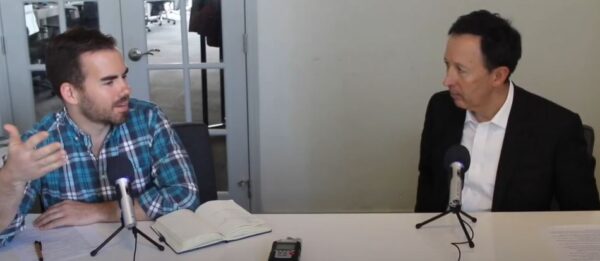Mark Switaj, CEO of Roundtrip, and Mark Joseph, CEO of Mobitas Advisors, and former CEO of TransDev sit down to talk shop about transportation, paratransit, and healthcare. This is the final installment and focuses specifically on paratransit investment opportunities from a VC perspective.
Mark Switaj: “Mark, we talk a lot about the opportunities ahead of us, where do you see investment in this space: the intersection of healthcare and paratransit?”
Mark Joseph: “From the healthcare institution side, managing patient transportation as a part of the sort of continuum of services this is the admissions, the discharge of patients, connecting them to the transportation services, and making sure patients aren’t sitting around. Time is money for these institutions. It’s also important from a patient service standpoint, so I think there are investments in trying to integrate these services between your software, your services, as well as coordinating the transportation services. And then there is a, what you just touched on, in terms of where the future might be going. Unfortunately, a lot of the transportation services have been in silos, so there’s a non-emergency medical silo (NEMT transportation silo), there’s an ADA paratransit silo, there are other transportation silos…”
Mark Switaj: “There’s a grant program, yeah.”
Mark Joseph: “Right. And you’re talking about how patients can be transported in a much more efficient way, and so I believe that there are paratransit investment opportunities to route, schedule, and transport patients across different funding sources, who come from different funding sources, in a much more optimized way that will drive down those costs and improve quality.”
Mark Switaj: “Yeah, it’s kind of funny that you’re touching on that, Mark. One of the things that we’ve started to look at is really the positioning of transportation in the healthcare space. So we’ve got a healthcare provider, called it a ‘hospital’, that is looking at a population that is most vulnerable, and so they’re keeping their eye on that population and they’re looking to access transportation for that population. And so, in many cases, it’s the client that is the provider: the hospital. And, to your point, we’ve got these transportation silos, so one of the initiatives that we’re starting to see come together is this idea of — and it’s not brand new, right? — the idea of patient-centered transportation, or patient-centered healthcare, where instead of the hospital being the center of transportation, it’s really the patient.
And so, what we mean by that, exactly like you laid out, is this idea of we’ve got the rider, ‘Patient Jones’ who’s got these different verticals of rides. They’ve got it through the paratransit system like you mentioned, NEMT (non-emergency medical transport benefit), and then they’re in an ACO. So, now the hospital has created a population health department that is looking at minimizing outcomes. Oh, and they’re also a part of the American Cancer Society where they have a program for cancer treatment. So, actually it’s based on the individual. What are the access to rides that are available, and most importantly, for the need of that individual? Maybe that’s mobility, maybe it’s based on need for ride based on, you know — is it medical? Is it social determinants of health? Is it a discharge? And then how do we begin to tie all of these together?
My personal ‘aha!’ moment was we had a rider, that beneficiary, patient — what do we call them; it’s all the same individual — that was going in from home to the hospital. We saw this through the data in our system, and then they would go from the hospital back home. Okay, so that was a discharge. And then through the paratransit program, was going from home to fast food… to home… to fast food… to home… to a different fast food place, to home, to another fast food, to home. Home to ER. So, is there a level of with this information and combining of, you know the medical rides, and the paratransit rides to say hey, for this individual, maybe there’s a level of education — just kind of talking out loud — that can be provided to that individual and say ‘hey, you’re going to access food that might not be the best for you, and it’s impacting your health, and as a result you’re frequenting the hospital when we could maybe be looking at food delivery service, or other means to get you the basic necessities that you require to keep you healthier, active, and in the community.
So, there’s a lot going on as we intersect — beyond just even the rides and the access — the information and data points to say how can we actually improve the outcomes?
Mark Joseph: Right, well the good news is that you didn’t take that patient directly from the fast food to the hospital!
